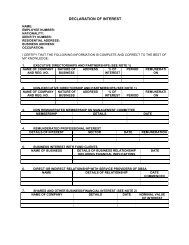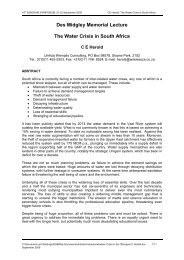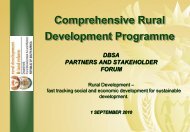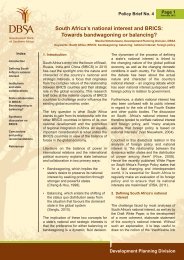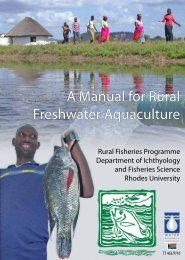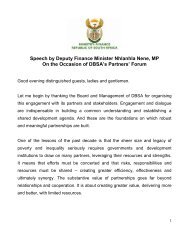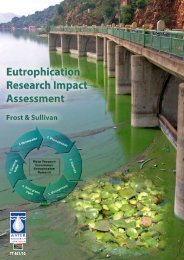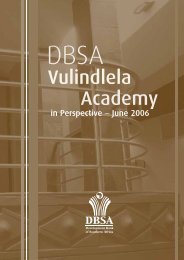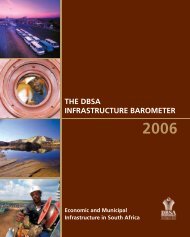A Knowledge Strategy
A Knowledge Strategy
A Knowledge Strategy
Create successful ePaper yourself
Turn your PDF publications into a flip-book with our unique Google optimized e-Paper software.
1.4.2 Products and services<br />
• Market knowledge – knowledge of the characteristics, dynamics and needs of<br />
the target markets (as per the market segmentation model) is needed if the<br />
Bank is to identify market opportunities and design innovative products and<br />
services tailored to the needs of different segments of its market.<br />
• Technical knowledge for the design of products and services – includes<br />
technical knowledge for developing lending and financial instruments, assetbacked<br />
project finance, grant funding and technical assistance in different<br />
fields, knowledge and skills transfer and training, policy advice and advocacy,<br />
project design and management, and procurement, amongst others.<br />
1.4.3 Internal systems to support delivery<br />
• Product and service delivery – knowledge and internal systems for the design,<br />
delivery and operation of products and services. These include funding,<br />
marketing, project appraisal (including the operations cycle and modules),<br />
project selection, monitoring and evaluation, and the management of risk.<br />
These systems help to ensure that products and services are delivered<br />
effectively, meet market needs and are aligned with strategy and operating<br />
principles of the DBSA.<br />
• Design and operationalisation of the general support infrastructure –<br />
knowledge needed for establishing and maintaining the facilities and physical<br />
infrastructure of the DBSA.<br />
1.4.4 <strong>Knowledge</strong> resource management<br />
• Staff selection – targets and recruits staff with the appropriate skills necessary<br />
to create, apply and manage knowledge.<br />
• Skills transfer and development – designs and conducts training, including<br />
skills transfer and development programmes that augment the creation,<br />
application and management of knowledge.<br />
• <strong>Knowledge</strong> capture and archiving systems – designs, implements and operates<br />
systems to capture and archive knowledge, ensuring that it remains relevant to<br />
the functional activities of the DBSA.<br />
• <strong>Knowledge</strong> access and dissemination systems – designs and operates systems<br />
and processes to access and disseminate knowledge for the various functional<br />
activities of the Bank.<br />
1.5 Critical mechanisms of a knowledge management strategy<br />
Building and expanding its knowledge base is central to the DBSA achieving its<br />
objectives in the region and becoming a centre of excellence in development<br />
knowledge. To ensure efficiency and effectiveness, the knowledge management<br />
strategy is to be implemented in an incremental manner, beginning with the<br />
priority areas. Current initiatives planned and underway will be revisited to<br />
determine relevance. The strategy is based on several ‘pillars’.<br />
4 Development Bank of Southern Africa



